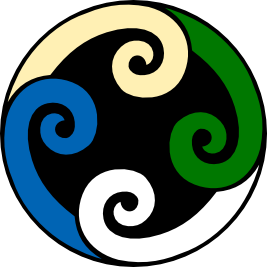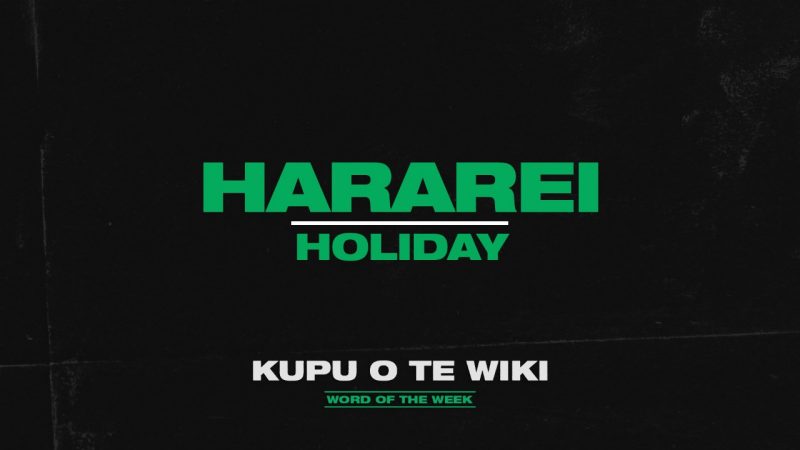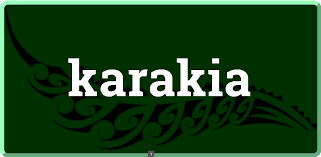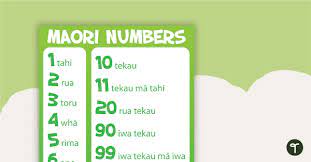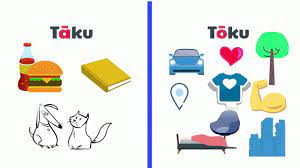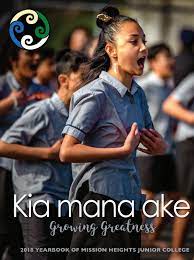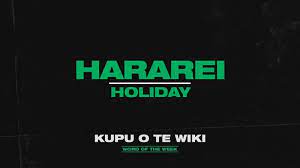10 Te Reo Māori 1
Section outline
-
-
Opened: Sunday, 5 May 2024, 12:00 AMDue: Friday, 14 June 2024, 3:00 PM
-
Opened: Wednesday, 6 November 2024, 12:00 AMDue: Friday, 8 November 2024, 3:00 PM
-
-
He whakataki - Introduction
E ngā tau tekau, nau mai, haere mai ki Te Kura Mana Ake (MHJC). Ko Matua Leeroy ahau. Ko tōku hiahia, he tino ngahau ā tātou haerenga ki te reo Māori i tēnei tau. Kia kaha, kia toa, kia manawanui!
Welcome to year 10s! The aim of this course is to explore and understand Māori language and Traditions through a range of activities, discussions and assessments.
Course Outline
By the end of 2024 Te Reo Māori you will be able to:
Recite 6 karakia
Pronounce Māori words accurately.
Use and respond to Māori greetings
Demonstrate an understanding of some common tikanga Māori
Demonstrate 2 types of mihimihi
TBC.....
-
Opened: Monday, 6 May 2024, 12:00 AMDue: Thursday, 13 June 2024, 12:00 AM
Prepare a profile of a whānau member or ancestor on a google slideshow OR poster.
You may include (but are not limited to) the following information in your presentation
- Pepeha (of chosen person)
- Whakapapa chart (family tree) showing your connection to them
- Where they were born
- Where they grew up
- Where they went to school
- Their occupation
- Where the person has worked/works now
- Who the person married
- The person’s children, how many (if any)
- Why you have chosen this person
- What do you admire about them?
- A whakatauki to explain something about them.
Notes:
Biographical information should. be in te reo māori
Explanation of your whakatauki and why you admire the person can be written in English
-
Opened: Monday, 21 October 2024, 4:00 PMDue: Tuesday, 5 November 2024, 12:00 PM
-
Opened: Monday, 6 May 2024, 12:00 AMDue: Thursday, 13 June 2024, 12:00 AM
Prepare a profile of a whānau member or ancestor on a google slideshow OR poster.
You may include (but are not limited to) the following information in your presentation
- Pepeha (of chosen person)
- Whakapapa chart (family tree) showing your connection to them
- Where they were born
- Where they grew up
- Where they went to school
- Their occupation
- Where the person has worked/works now
- Who the person married
- The person’s children, how many (if any)
- Why you have chosen this person
- What do you admire about them?
- A whakatauki to explain something about them.
Notes:
Biographical information should. be in te reo māori
Explanation of your whakatauki and why you admire the person can be written in English
-
Opened: Monday, 21 October 2024, 4:00 PMDue: Tuesday, 5 November 2024, 12:00 PM
-
Enter text here...
EXPLORE / TŪHURA learning intentions:
- We are EXPLORING to recognise and tūhua new kupu māori
- We are EXPLORING to analyse māori sentence structures
Enter text here...
Kia ora...
Paearu Angitu / Success Criteria: I can/have...
- practice new classroom vocab to confidently pronounce new key words (See image below)
- Identifying and translating Te Reo Māori and English kupu
Hei Mahi / Activities:
- Introduction of Yr10 Māori
- Kia mana ake proverb
- Basic classroom vocab
- kaupapa o te akomanga
Mahi Kāinga / Homework:
Write here...
-
Enter text here...
EXPLORE / TŪHURA learning intentions:
- We are EXPLORING to recognise and tūhua new kupu māori
- We are EXPLORING to analyse māori sentence structures
Enter text here...
Kia ora...
Paearu Angitu / Success Criteria: I can/have...
- Identify and describe the location of the object in Te Reo Māori
- Practice and translate new kupu Māori (See image below)
Hei Mahi / Activities:
- Kaupapa o te akomanga
- Karakia - Whakataka te hau, Kia whakakairia
- Kupu Akomanga revision
- Kupu Hou - Tēnei, tēnā, tērā
Mahi Kāinga / Homework:
Write here...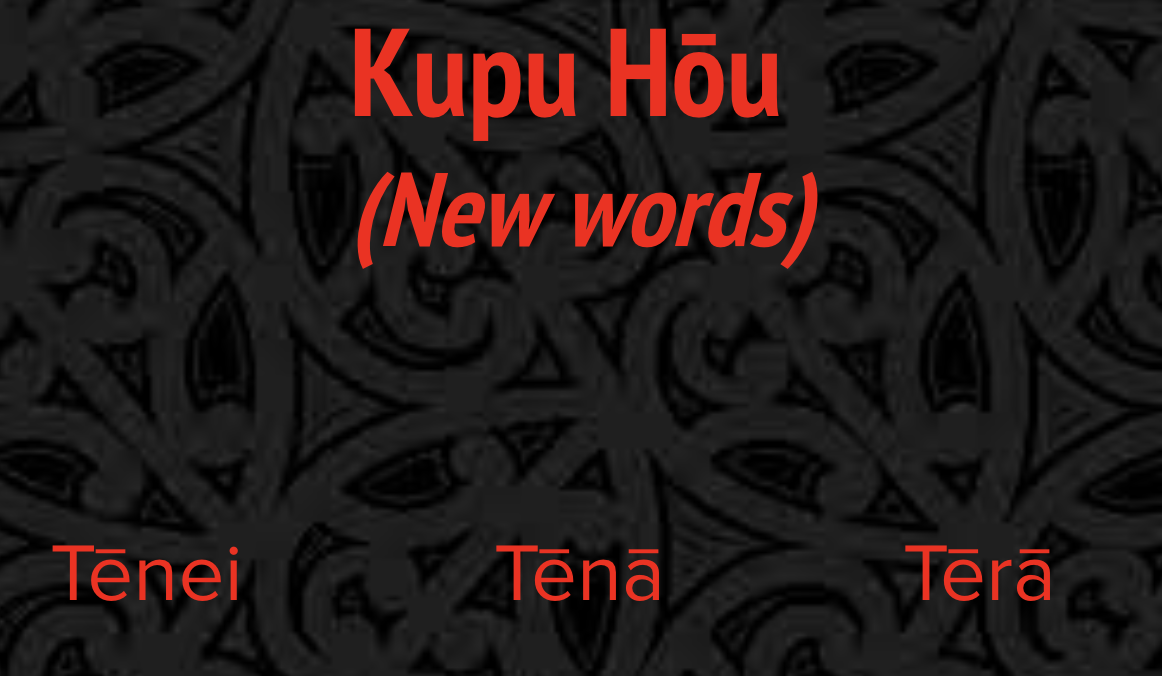
-
Enter text here...
EXPLORE / TŪHURA learning intentions:
- We are EXPLORING to recognise and tūhua new kupu māori
- We are EXPLORING to analyse māori sentence structures
Enter text here...
Kia ora...
Paearu Angitu / Success Criteria: I can/have...
- Identify and practice new kupu māori (4 directions)
- applied understanding of new kupu māori to play mahi rākau (māui/matau) and kemu nekehanga (movement game)
Hei Mahi / Activities:
- Reflection
- Kupu Hou: Nekehanga
- Nekehanga kemu
- Collab w/Mr Gardi (Kaitiakitanga)
Mahi Kāinga / Homework:
(Add nekehanga kupu picture) -
Enter text here...
FOCUS / ARONGA learning intentions:
- We are FOCUSING to choose and compare different questions and phases
- We are FOCUSING hei kōwhiri i ngā kupu māori to respond to certain prompt
Enter text here...
Kia ora...
Paearu Angitu / Success Criteria: I can/have...
- create a script and share the direction route in Te Reo Māori
- identify and translating new Māori rerenga kōrero (sentence structure)
- identify and translating new kupu Māori for direction
- Nekehanga reflection
- Rerenga kōrero hou: Haerenga
- Haerenga hanga kōrero
- Tuku mihi
Mahi Kāinga / Homework:
(add rerenga kōrero here)
-
Enter text here...
FOCUS / ARONGA learning intentions:
- We are FOCUSING to choose and compare different questions and phases
- We are FOCUSING hei kōwhiri i ngā kupu māori to respond to certain prompt
Enter text here...
Kia ora...
Paearu Angitu / Success Criteria: I can/have...
- apply understanding of kupu māori and sentence structure to prepare a skit
- participate in class members skit to build confidence and accuracy in speaking Te Reo Māori
- Analyse and translated new karakia for term 2
Hei Mahi / Activities:
- Reflection: Herenga hanga kōrero
- Reflection on T1 mahi
- Assessment 1 intro
- T2 Expectation - Karakia hou: me te mihimihi
Mahi Kāinga / Homework:
Write here...
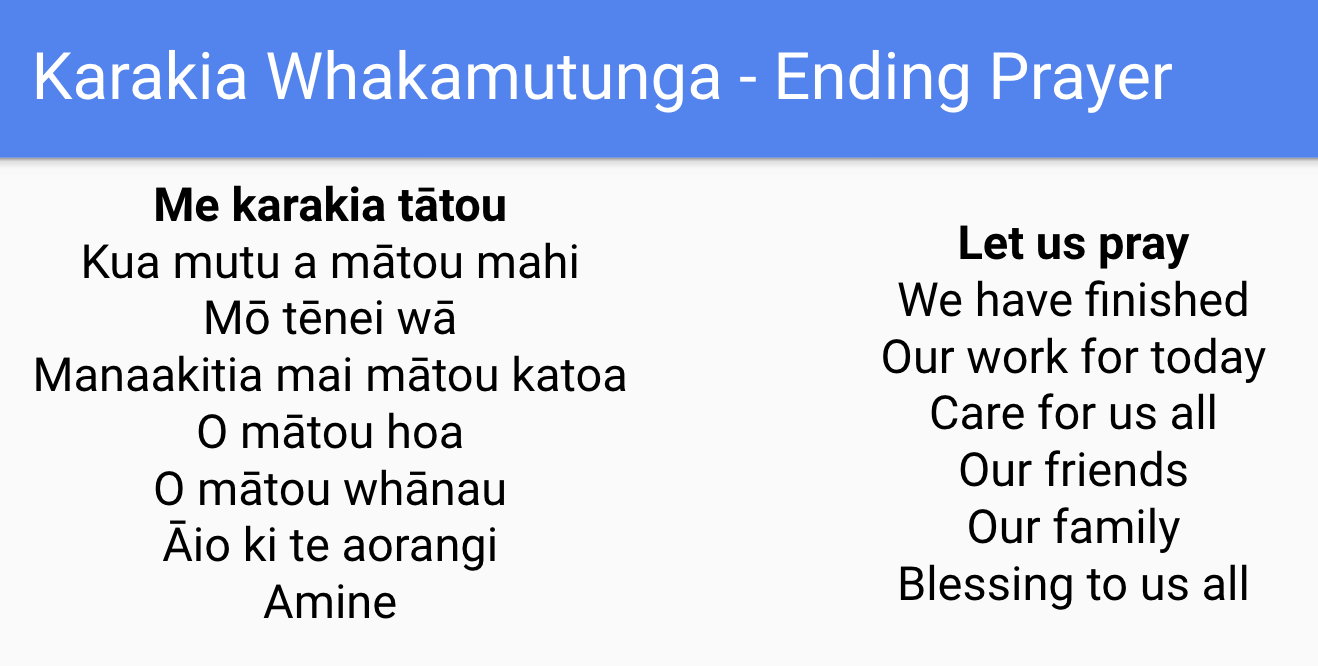
-
Kia ora...
Paearu Angitu / Success Criteria: I can/have...
- Ask a 'He aha' in a question form
- Answer a 'He aha' in a answer form
- Say a range of colours in Māori
- Respond to Matua Leeroy when he asks questions
Hei Mahi / Activities:
- Whakaaroaro T1 (Reflection)
- Mahi rākau
- Maumahara (memory)
- Cloze activity
- Mahi takirua - Pātai/Whakautu
Mahi Kāinga / Homework:
Write here...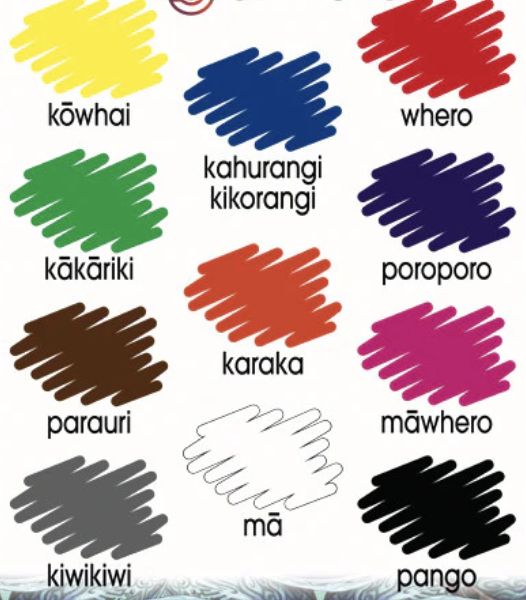
-
Kia ora...
Paearu Angitu / Success Criteria: I can/have...
- Ask a 'He aha' in a question form
- Answer a 'He aha' in a answer form
- Say a range of colours in Māori
- Respond to Matua Leeroy when he asks questions in school
- Whakaaroaro (Reflection) W1&2
- He/Te/Ngā
- Maumahara (Memory) - Expand of kara vocab
- Mahi rākau
- Cloze activity
- Mahi takirua - Pātai/Whakautu

-
Kia ora...
Paearu Angitu / Success Criteria: I can/have...
- Write here
Hei Mahi / Activities:
- Write here
- Write here
Mahi Kāinga / Homework:
Write here... -
Kia ora...
Paearu Angitu / Success Criteria: I can/have...
- Write here
Hei Mahi / Activities:
- Write here
- Write here
Mahi Kāinga / Homework:
Write here... -
FOCUS / ARONGA learning intentions:
- We are FOCUSING.. electing and using language, symbols, and texts to communicate
-
EXPLORE / TŪHURA learning intentions:
- We are EXPLORING physical characteristics, personality and feelings
-
PLAN & DO / WHAKAMAHI learning intentions:
- We are PLANNING so that we can demonstrate our final presentation
-
EXPLORE / TŪHURA learning intentions:
- We are EXPLORING to find and Identify and describe the characteristics of music associated with cultural contexts.
- We are EXPLORING to analyse and interpret knowledge of people associated with Te Ao Haka
Paearu Angitu / Success Criteria: I can/have...
- Identify and describe the characteristics of music associated with a range of sound environments, in relation to historical, social, and cultural contexts.
- Demonstrate knowledge of people associated with Māori performing arts
Hei Mahi / Activities:
- Look into Assessment 2: Te Ao Haka Dignitary
- Research about one Māori Dignitary
Mahi Kāinga / Homework:
- Assessment 2: Te Ao Haka Dignitary
-
EXPLORE / TŪHURA learning intentions:
- We are EXPLORING to find and Identify and describe the characteristics of music associated with cultural contexts.
- We are EXPLORING to analyse and interpret knowledge of people associated with Te Ao Haka
Paearu Angitu / Success Criteria: I can/have...
- Identify and describe the characteristics of music associated with a range of sound environments, in relation to historical, social, and cultural contexts.
- Demonstrate knowledge of people associated within Te Ao Haka
Hei Mahi / Activities:
- Video analyse
- Meaning
- Effect
- Representation - Quickfire Case Study
- Split into 2 groups
- 10 mins to research
* Date of birth
* Place of birth
* Kapa Haka associated with
* Song they may have composed
(Reason behind their composition)
* Find a video of their song or them performing
- Dignitaries: Rob Ruha, Pere Wihongi
Mahi Kāinga / Homework:
- Assessment 2: Te Ao Haka Dignitary
-
EXPLORE / TŪHURA learning intentions:
- We are EXPLORING to find and Identify and describe the characteristics of music associated with cultural contexts.
- We are EXPLORING to analyse and interpret knowledge of people associated with Te Ao Haka
Paearu Angitu / Success Criteria: I can/have...
- Identify and describe the characteristics of music associated with a range of sound environments, in relation to historical, social, and cultural contexts.
- Demonstrate knowledge of people associated within Te Ao Haka
Hei Mahi / Activities:
- Video
Te Ao Haka Journey - Waiata Hou
He aha te hau?
- Tikanga
- Words
- Rangi
He aha te hau link
Mahi Kāinga / Homework:
- Assessment 2: Te Ao Haka Dignitary
